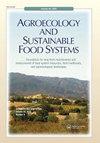现代工厂采用非热法加工原料,以增加其储存性
IF 2.6
3区 农林科学
Q1 AGRICULTURE, MULTIDISCIPLINARY
引用次数: 1
摘要
近几十年来,随着加工厂原料的热加工方法的发展,非热加工方法也得到了积极的发展,这使得最大限度地保持原始原料的定性特性和增加成品的保质期成为可能。当使用这些方法时,产品可能会轻微加热,例如,在紫外线辐射(UVR)的加工中。在使用过滤这类处理的情况下,加热是完全不存在的;在高压加工产品(以下简称HPP)的条件下,观察到低温状态。这些方法的特点是尽量减少对成品感官特性(质地、外观、颜色、气味)的影响,以及微量和宏量营养素的保存。本文讨论了处理植物材料的主要非热方法:高压(HPP)、脉冲电场(PEF)、放射性辐射、紫外线辐射(UVR)和过滤。指出了其优点和阻碍其在工业规模上广泛应用的因素。需要指出的是,高压、紫外线辐射和某种程度的过滤在食品生产中被广泛使用,而在脉冲电场和放射性辐射下进行加工,由于需要确保服务人员的加工安全,使用极为有限。还应注意的是,仅用非热方法加工会导致成品的保质期有限,并且通常需要较低的储存温度。如果需要延长保质期,可以将热加工和非热加工相结合,例如对果汁进行微滤(超滤),装瓶进入消费包装,温和巴氏杀菌。毫无疑问,这种组合的优势可以减少产品的热负荷,因为过滤减少了最初的微生物污染。因此,我们得到了一种储存稳定的产品,质量损失最小,并保留了原有的潜力。本文章由计算机程序翻译,如有差异,请以英文原文为准。
Modern non-thermal method of processing plant raw materials used to increase its storability
Along with thermal methods of processing plant raw materials, non-thermal processing methods have been actively developed in recent decades, which make it possible to preserve the qualitative characteristics of the initial raw materials to the maximum and increase the shelf life of the finished product. When using these methods, slight heating of the product can occur, for example, as in the processing by ultraviolet radiation (UVR). In the case of using such a type of processing as filtration, heating is completely absent; under the conditions of high pressure processing of the product (hereinafter HPP), a low temperature regime is observed. These methods are distinguished by minimizing the impact on the organoleptic characteristics of the finished product (texture, appearance, color, odor), as well as the preservation of micro- and macronutrients. The article discusses the main non-thermal methods of processing plant materials: high pressure (HPP), processing in a pulsed electric field (PEF), radioactive radiation, ultraviolet radiation (UVR), filtration. The advantages and factors hindering their widespread use on an industrial scale are noted. It is noted that high pressure, ultraviolet radiation and filtration to one degree or another are widely used in food production, while processing in a pulsed electric field and radioactive radiation are of extremely limited use due to the need to ensure the safety of processing for service personnel. It should also be noted that processing only by non-thermal methods leads to a limited shelf life of finished products and often requires lower storage temperatures. If it is necessary to increase the shelf life, it makes sense to combine thermal and non-thermal processing methods, for example, microfiltration (ultrafiltration) of juice, bottling into consumer packaging, gentle pasteurization. The undoubted advantage of this combination can be a reduction in the thermal load on a product, since the initial microbiological contamination is reduced by filtration. And, as a result, we get a stably stored product with minimal quality loss and preserved native potential.
求助全文
通过发布文献求助,成功后即可免费获取论文全文。
去求助
来源期刊

Agroecology and Sustainable Food Systems
AGRICULTURE, MULTIDISCIPLINARY-GREEN & SUSTAINABLE SCIENCE & TECHNOLOGY
CiteScore
4.80
自引率
7.70%
发文量
73
期刊介绍:
Agroecology and Sustainable Food Systems is devoted to the rapidly emerging fields of agroecology and food system sustainability. By linking scientific inquiry and productive practice with transformative social action, agroecology provides a foundation for developing the alternative food systems of the future. The journal focuses on the changes that need to occur in the design and management of our food systems in order to balance natural resource use and environmental protection with the needs of production, economic viability, food security, and the social well-being of all people.
Agroecology and Sustainable Food Systems examines our current food systems from production to consumption, and the urgent need to transition to long-term sustainability. The journal promotes the study and application of agroecology for developing alternatives to the complex problems of resource depletion, environmental degradation, a narrowing of agrobiodiversity, continued world hunger, consolidation and industrialization of the food system, climate change, and the loss of farm land. The journal uses a food systems approach, and seeks experiences in agroecology that are on-farm, participatory, change-oriented, and backed by broad-based methodologies of sustainability analysis and evaluation.
 求助内容:
求助内容: 应助结果提醒方式:
应助结果提醒方式:


